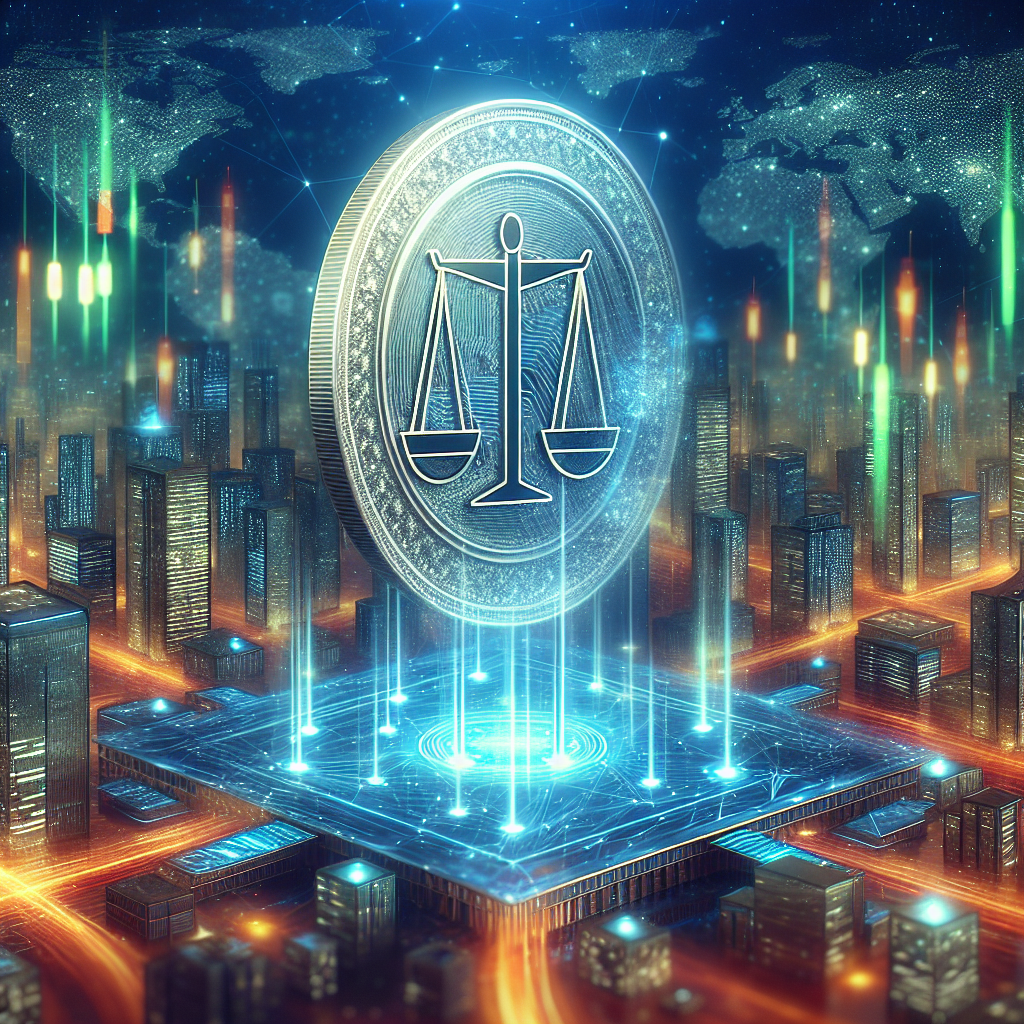Stablecoins Revolutionizing Deobanks in the Financial Landscape
The financial world is undergoing a rapid transformation, with stablecoins emerging as a powerful force reshaping traditional banking systems. As decentralization takes center stage, decentralized banks, or Deobanks, are leveraging stablecoins to enhance their offerings and cater to a growing demand for alternative financial solutions. In this article, we will explore how stablecoins are revolutionizing Deobanks, the benefits they provide, and their potential impact on the future of finance.
The Rise of Deobanks and Stablecoins
Deobanks are decentralized financial institutions designed to operate without the need for traditional banking infrastructure. They utilize blockchain technology to provide services such as lending, borrowing, and payments, all while ensuring transparency and security. Stablecoins, which are cryptocurrencies pegged to stable assets like fiat currencies or commodities, serve as the backbone of these operations.
With the increasing desire for borderless financial services, stablecoins have gained traction among users looking for stability in the volatile crypto markets. This equilibrium allows Deobanks to offer services without the fear of large fluctuations in asset values, providing a more reliable financial service.
Understanding Stablecoins
Stablecoins come in various forms, with the primary types being fiat-collateralized, crypto-collateralized, and algorithmic stablecoins. Each type has its own mechanisms for maintaining price stability:
- Fiat-collateralized stablecoins: These are backed by fiat currencies such as the US dollar, ensuring that for every stablecoin issued, an equivalent amount of fiat currency is held in reserve.
- Crypto-collateralized stablecoins: These stablecoins are backed by other cryptocurrencies. They use smart contracts to lock collateral and stabilize the stablecoin’s value.
- Algorithmic stablecoins: These utilize algorithms and smart contracts to regulate supply, expanding and contracting as needed to maintain price parity with their target value.
As these various stablecoin types gain prominence, Deobanks are increasingly incorporating them into their ecosystems, harnessing the power of these digital assets to enhance their financial services.
Benefits of Stablecoins in Deobanks
Implementing stablecoins within Deobanks offers numerous advantages that make them an attractive option for both users and service providers. Here are some key benefits:
1. Enhanced Stability
Traditional cryptocurrencies are notorious for their price volatility. Stablecoins provide the stability needed for users to confidently engage in financial transactions, knowing that their assets are less likely to fluctuate dramatically from day to day.
2. Reduced Transaction Costs
Stablecoins facilitate low-cost transactions by reducing the need for intermediaries. This can result in lower fees for users when making payments or transferring funds, positively impacting the overall user experience.
3. Increased Access to Financial Services
With Deobanks utilizing stablecoins, individuals who previously lacked access to traditional banking services can now participate in the financial ecosystem. This includes unbanked populations and those in regions with limited banking infrastructure.
4. Faster Transactions
Transactions using stablecoins can occur almost instantly, thanks to blockchain technology. This immediacy addresses the slow processing times often associated with traditional bank transactions, providing a more fluid financial experience for users.
5. Programmable Money
By leveraging blockchain technology, stablecoins allow for smart contracts that enable programmable financial services. This means that users can automate transactions and create complex financial agreements without the need for intermediaries.
Real-World Examples of Stablecoins in Deobanking
Several Deobanks are already harnessing the power of stablecoins to enhance their services and attract a broader customer base. Some notable examples include:
1. MakerDAO
MakerDAO is one of the pioneers in the decentralized finance (DeFi) space, and its stablecoin, DAI, is a prime example of a crypto-collateralized stablecoin. Users can lock Ethereum as collateral and generate DAI, which can then be used for various financial transactions within the DeFi ecosystem. DAI’s stability allows users to borrow and lend with confidence.
2. Terra
The Terra network utilizes its algorithmic stablecoin, UST, to provide a platform for seamless payments and decentralized finance. By integrating UST into various applications, Terra facilitates low-cost transactions and easy access to financial services.
3. USDC and Other Fiat-Collateralized Stablecoins
With the growing popularity of fiat-collateralized stablecoins like USD Coin (USDC), many Deobanks are incorporating these assets into their services. The assurance of being backed by USD provides users with confidence while transacting in a digital environment.
The Future of Stablecoins and Deobanks
As stablecoins continue to gain traction, their integration within Deobanks is likely to expand. The advantages they provide are hard to ignore in a world increasingly focused on efficiency, transparency, and accessibility. Here are some potential future trends:
1. Regulatory Considerations
With the rise of stablecoins and Deobanks, regulators worldwide are starting to pay closer attention. It will be crucial for these decentralized entities to adhere to legal frameworks to foster trust among users while ensuring that they operate within jurisdictional guidelines.
2. Innovation in Financial Services
The landscape of financial services is ripe for innovation, and stablecoins are leading the charge. We can expect to see new products and services emerge, powered by stablecoins, as Deobanks continue to evolve.
3. Enhanced Interoperability
As various Deobanks develop, the need for interoperability between different stablecoin networks will grow. Protocols and platforms that enable seamless exchanges between these entities are likely to become more prevalent.
Conclusion
The integration of stablecoins within Deobanks is undoubtedly reshaping the financial landscape. By leveraging the stability, efficiency, and accessibility offered by these digital assets, Deobanks are creating a new paradigm in banking that challenges the traditional system. As the future unfolds, it will be exciting to see how stablecoins continue to revolutionize the Deobanking sector and what innovations lie ahead.
In summary, the marriage of stablecoins and Deobanks signifies a pivotal moment in finance, pointing towards a more inclusive, transparent, and efficient financial future. With each passing day, it becomes clearer that stablecoins are not just a fleeting trend but a fundamental element of the forthcoming financial ecosystem.




